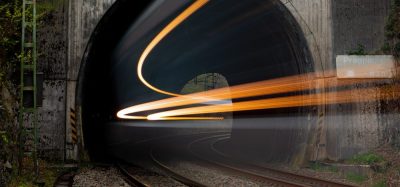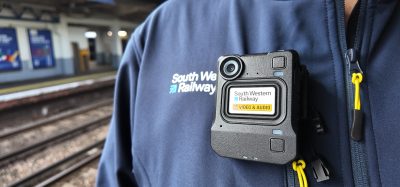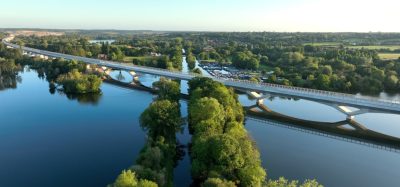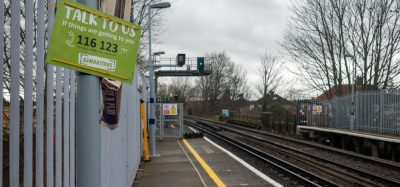Level crossings – OLA model cooperation
Posted: 15 September 2006 | | No comments yet
Covering 440,000km2, Sweden is a relatively large country – approximately the size and shape of California. However, the population is only nine million, which means a density of 20 persons per km2. Approximately 90% of the population lives in the southern third of the country. Sweden is located on the same latitude as Alaska and has a cold climate. It does, however, have four seasons since it is tempered by the warm Gulf Stream running through the North Atlantic Ocean. The northern part of the country is located above the Arctic Circle. A large proportion of the country is covered by coniferous forest.
Covering 440,000km2, Sweden is a relatively large country – approximately the size and shape of California. However, the population is only nine million, which means a density of 20 persons per km2. Approximately 90% of the population lives in the southern third of the country. Sweden is located on the same latitude as Alaska and has a cold climate. It does, however, have four seasons since it is tempered by the warm Gulf Stream running through the North Atlantic Ocean. The northern part of the country is located above the Arctic Circle. A large proportion of the country is covered by coniferous forest.
Covering 440,000km2, Sweden is a relatively large country – approximately the size and shape of California. However, the population is only nine million, which means a density of 20 persons per km2. Approximately 90% of the population lives in the southern third of the country.
Sweden is located on the same latitude as Alaska and has a cold climate. It does, however, have four seasons since it is tempered by the warm Gulf Stream running through the North Atlantic Ocean. The northern part of the country is located above the Arctic Circle. A large proportion of the country is covered by coniferous forest.
Transport policy goals
Banverket is an authority that is funded primarily by government grants. Banverket’s activities are governed by the Parliamentary Transport Policy Goals. Parliament has laid down these goals to ensure that citizens and businesses in all parts of the country are provided with transportation that is economically efficient and sustainable in the long term. The transport policy goals most relevant to level crossings are:
- An accessible transport system
- Safe traffic
- A high standard of transport quality
An accessible transport system
An accessible transport system can be achieved by good planning. The closing of level crossings does not only concern the railways. All parties concerned, including municipal administrations and land owners, must be involved in the planning processes.
Safe traffic
Safe traffic is essential. Rail and road traffic must be able to pass through crossings without incidents occurring. Sweden’s long-term road safety goal is that there should be no fatalities or serious injuries in road and rail traffic. This goal was ratified by the Swedish Parliament in 1997 and is based on the ‘Vision Zero’ programme.
High standards of transport quality
A high standard of transport quality can be achieved when level crossing installations are efficient and highly reliable. One aim is to have a low closure time for road traffic.
Railways in Sweden
Sweden has 1.2km of railway lines per 1,000 citizens. The total length of lines of the Swedish rail network is 11,000km of which 1,800km are double track or more. Approximately 7,700km of the lines are electrified.
Banverket operates and administers the majority of the state-owned railway network. This represents a little less than 90% of the total length of operational track in Sweden. The second largest administrator of railway infrastructure is privately owned Inlandsbanan AB, with just below 10% of operational track length.
Rail traffic in Sweden
Most of the freight transports are in the north-south direction due to the shape of the country. Because of frozen harbours, sea transport by smaller vessels is difficult during winter time. The cargo consists of iron ore, forestry products, manufactured steel, passenger cars and containers or trailers.
Passenger traffic is most common in the southern part of the country. The traffic is mixed with passenger trains and freight trains on the same track.
Freight traffic on state-owned track infrastructure is deregulated in Sweden. All transport operators are entitled to operate such traffic.
Passenger traffic, however, is still regulated. State-owned SJ AB has the right to operate passenger services on the main line network. Local Public Transport Authorities have the right to operate passenger services in their own counties. It is possible for the state to procure passenger services on main lines if nobody wants to operate the traffic.
Level crossings in Sweden
There are approximately 10,000 level crossings in Sweden, and roughly 3,000 of them have some kind of signalling equipment. Banverket is responsible for 8,000 level crossings with 1,200 of these having full barriers, 1,000 half barriers and 700 with some kind of light and/or audible signal. All installations are automatically operated by the movements of trains. The number of grade separated intersections is nearly 3,000. Every year, approximately 100 crossings are closed. At this rate, level crossings will remain a reality for many years.
Level crossing accidents in Sweden
Efforts over recent years to improve safety have resulted in fewer level crossings and added safety at remaining crossings. In 1996, there were 52 accidents at level crossings, a figure that since then has decreased to just below 30 per year. The objective set by the government of halving the 1996 figure to 26 accidents by 2007 will not quite be achieved. The number of fatalities is below 10 per year.
After a successful accident reduction program involving level crossings, government funds were redirected to other safety programmes within Banverket in the mid 90s. As a result, the accident rate levelled out by the end of the decade. Two severe accidents in 2004 and 2005 again brought focus on the dangers of level crossings.
The OLA Model
OLA was developed by the Swedish National Road Administration, Vägverket, as a tool for addressing complex problems involving several parties. OLA stands for: Objective Data, List of Solutions, and Addressed Plans of Action, referring to the three meetings to which representatives from different relevant organisations are brought together to approach a common theme. Each organisation develops a plan (or plans) of action endorsed by its management. The time schedule is held deliberately tight in OLA in order to set plans into action as soon as possible. Plans not possible to set into action in the very near term could be addressed at an annual meeting for activity planning. Essential for OLA is committed cooperation within the framework of the three meetings (O, L and A) where all the organisations involved are expected to attend.
O – the ‘objective data’ meeting
At this meeting, each organisation presents data which they have assembled independently. The aim is to share information with the other participants. Data could be derived from analysis of in-depth studies, literature surveys, and/or official statistics. Also, the proficiency and experience of the participants themselves are important. The result of the meeting is published in a public report.
L – the ‘list of solutions’ meeting
This meeting is one of brain storming. The aim is to identify effective solutions in the short and long term. What can my organisation do? What is needed from other organisations? Is cooperation between organisations needed? The result of this meeting is not public. However, all ideas are listed in a document to be worked on in each organisation.
A – the ‘addressed plans of action’ meeting
Each organisation must be fully prepared to implement the action plans presented at the meeting. The plans must be discussed and approved by the management of each organisation in advance and carry the signature of the CEO. The plans of any participating organisation may be carried out by the organization itself or together with one or more of the other participants. The action plans should also clearly answer the questions; Who? What? When? and How much?
Presentation
At a meeting, where representatives from both industry and media are present, the action plans will be presented and time allowed for questions. The presentation is made by management representatives from each organisation, with the support of specialists if necessary. Each organisation gives a short presentation of their action plans.
Follow-up
One year after the presentation, a follow-up meeting for all participants is held. Each organisation presents a report, signed by its CEO, informing of implemented action plans. Evaluation of progress is discussed.
The level crossing OLA
The decision to carry out a Level Crossing OLA was made in the beginning of 2005 and the Action Plans were presented in March of 2006. The O-, L- and A-meetings were held in October, November and February, respectively. The follow-up meeting will be held in 2007.
The Level Crossing OLA assembled eight organisations:
- The Swedish National Rail Administration, Banverket
- The Swedish Road Administration
- The Association of Swedish Train Operators
- Bombardier Transportation
- The National Federation of Private Road Associations
- Stockholm Transport
- The Swedish Association of Local Authorities and Regions
- The Swedish Association of Road Haulage Companies
Results
The Level Crossing OLA resulted in approximately 40 Action Plans, of which Banverket answered for 18.
Individual plans of action
Among action plans to be implemented by an individual organisation are:
- At every level crossing provided with a signalling system, Banverket will place a notice informing the public of phone numbers to use to report problems.
- Banverket has decided to attach a sign on the inside of full barriers with the text: “Drive through the barrier!”
- Banverket will install LED signals within three years.
- Stockholm Transport has decided to investigate the possibility of installing a barrier system designed for tramways.
- The Swedish Association of Road Haulage Companies has decided to demand an ‘accelerator blocking mechanism’ that sets in when the lifting device is in the operation mode.
Joint plans of action
Currently there are no standards regulating road profiles of level crossings. It has become clear that some level crossings have unsatisfactory road profiles where heavy and low vehicles could get stuck. Some crossings also have sharp curves which long vehicles may have difficulties manoeuvring. Track maintenance, such as lifting the track, could worsen the situation. Without knowledge of such crossings, the Swedish Road Administration issues permits for the haulage of excessive loads and for vehicles of excessive widths, lengths and/or heights.
Action plans to be implemented in cooperation between organisations to solve the problems regarding level crossings with unsatisfactory road profiles are:
- Banverket has decided to make an inventory of crossings. In its initial phase, the information gathered will be based on the knowledge of local personnel.
- The Swedish Road Administration has decided to keep a record of level crossings having unsatisfactory road profiles to assist them when issuing permits for the haulage of excessive loads and for vehicles of excessive widths, lengths and/or heights.
- The Association of Swedish Train Operators and The Swedish Association of Road Haulage Companies has decided to encourage drivers to report level crossings considered to be of poor standard. Banverket will receive reports.
Experiences
Since the follow-up meeting has not yet been held at the time this article is published, it is not possible to give a complete overview of experiences and final results of the Level Crossing OLA. We would, however, like to share our experiences so far:
- Some organisations do not consider themselves to be ‘parties concerned’. Convince them, or they drop out.
- An OLA is a process outside of the usual workload and can, therefore, be seen as disturbing on-going business. When an incident occurs or a problem arises, an organisation may wish to initiate an OLA. It is hardly to be expected, however, that this initiative suits the activity planning of all organisations invited to participate. They need to become convinced of the importance of giving priority to the OLA and thus postpone other activities. It is essential to get the cooperation from managers concerned.
- Sometimes plans of action are possible but conflicting interests may limit their implementation. For example, it is not legally required in Sweden to paint a rail vehicle in a particularly visible colour. It may also conflict with the train operating company’s design program.
- An OLA should not be used as a market place for selling products.
- CEOs or Director Generals must countersign Action Plans and thus give ‘weight to the words’.
- An OLA must be taken seriously by all participants. Each organisation must do its part – present plans and cooperate – or leave the project.
- The OLA model offers a comprehensive opportunity to solve longstanding and/or shared problems.
Some good advice
We would also like to share some good advice:
- Hard-sell the OLA benefits to your organisation. Present the model and the process several times to the people you need in the project.
- Be prepared to explain. What is obvious to you may not be so to someone else. Present a clear overview of the process.
- Keep discussions concentrated and focused on what is realistic. Explain basic limitations and restraints in order to preclude unnecessary and time consuming debate. For example, legislation, physical limitations etc. may dictate boundaries that cannot be changed.
- Check your action plans many times. They must be in accordance with all other participating organisations.
- Use an already established venue for the presentation of the action plans, e.g. an annually scheduled conference, a trade fair or exhibition, which normally will attract representatives from both industry and media.
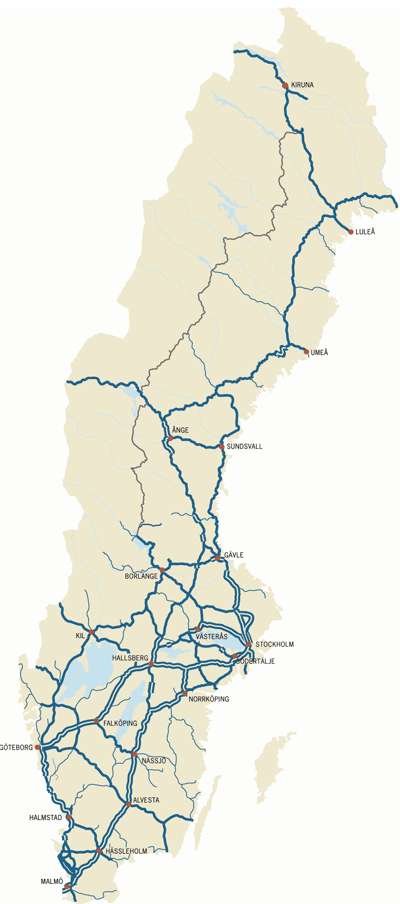

Figure 1: Rail network
Stay Connected with Global Railway Review — Subscribe for Free!
Get exclusive access to the latest rail industry insights from Global Railway Review — all tailored to your interests.
✅ Expert-Led Webinars – Gain insights from global industry leaders
✅ Weekly News & Reports – Rail project updates, thought leadership, and exclusive interviews
✅ Partner Innovations – Discover cutting-edge rail technologies
✅ Print/Digital Magazine – Enjoy two in-depth issues per year, packed with expert content
Choose the updates that matter most to you. Sign up now to stay informed, inspired, and connected — all for free!
Thank you for being part of our community. Let’s keep shaping the future of rail together!




